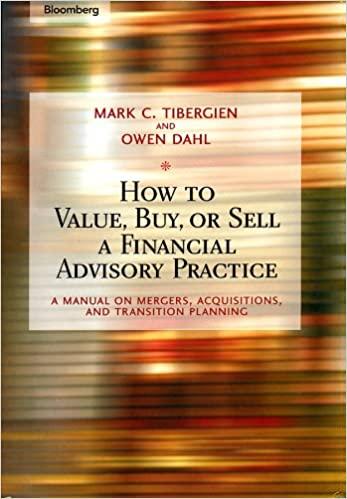Assume that historical returns and future returns are independenty and identically distributed and drawn from the same distribution a. Calculate the 95% confidence intervals for the expected annual retum of lour different investments included in the tables (the time period sparis 92 years) b. Assume that the values in the tabes are the true expected return and volatily (Le, estimated without error) and that these returns are normally distributed. For each investrent, calculate the probabety that an imvestor will not lose more than 3% in the next year. (Hint. For each irvesiment, you can use the function normdist(x,mean volatiliy, 1) in Excel to compute the probablity that a normally distributed variable with a given mean and volatility will exceed x where x in this case is - 3\%. Then subtract that probability from 100% to find the probabiliy that an investoc will not lose more than 3% ). c. Do all the probablities you calculated in part (b) make sense? If so, explain, If not, can you identify the reason? Data table (Click on the following icon in order to copy its contents into a spreadsheet.) Average Annual Returns for U.S. Small Stocks, Large Stocks (S\&P 500), Corporate Ronde and Trasein Rille 102k 2017 (Click on the following icon i in order to copy its contents into a spreadsheet) Assurme that hictarical returns and future returns are independenty and identically thstributed and drawn from the sarne dstrbetion. a. Calaulate the 95% confidence intervals far the expected annual return of four dwerent investments included in the taties (the time period spans 92 years) b. Astume that the values in the tables are the true expeched return and volatity (ie, estimated without error) and that these iehurns are normally distribeted For each investrnent, calculwe the distriouted variable with a given mean and volatily will exceed x where x in this case is 3%. Then subtact that probabally from toos to find the probablify that an investor will not lose more than J\%? c. Do all the probabilfes you calculated in part (b) make sense? If so, explain If not, can you ibentity the reason? a. Calculate the 95\$ confidence intervale for the expected armual return of four GHferent investenents hcluded in the tables (the dates are inclusive, so the time period spans 52 years) tore than 3\%) The probabaly of nat losing more than 3\% be malt stods in 6 (Round te two decrial plsces) The probatialy of not losing more than 3% tor the SRP 590 is $ (Round to two decimal places) The probabilley of not bosing more than as far corperate bonds a S. (Round to to decimal places) The probabilty of not losing eose than 3s for Treasury bili is 4 (Round is two decinal pleces ) c. Do al the probatzities you calalated in part (b) make sense? If to epplain If not can you ideriffy the reasen? (Select the best aheice below) Assume that historical returns and future returns are independenty and identically distributed and drawn from the same distribution a. Calculate the 95% confidence intervals for the expected annual retum of lour different investments included in the tables (the time period sparis 92 years) b. Assume that the values in the tabes are the true expected return and volatily (Le, estimated without error) and that these returns are normally distributed. For each investrent, calculate the probabety that an imvestor will not lose more than 3% in the next year. (Hint. For each irvesiment, you can use the function normdist(x,mean volatiliy, 1) in Excel to compute the probablity that a normally distributed variable with a given mean and volatility will exceed x where x in this case is - 3\%. Then subtract that probability from 100% to find the probabiliy that an investoc will not lose more than 3% ). c. Do all the probablities you calculated in part (b) make sense? If so, explain, If not, can you identify the reason? Data table (Click on the following icon in order to copy its contents into a spreadsheet.) Average Annual Returns for U.S. Small Stocks, Large Stocks (S\&P 500), Corporate Ronde and Trasein Rille 102k 2017 (Click on the following icon i in order to copy its contents into a spreadsheet) Assurme that hictarical returns and future returns are independenty and identically thstributed and drawn from the sarne dstrbetion. a. Calaulate the 95% confidence intervals far the expected annual return of four dwerent investments included in the taties (the time period spans 92 years) b. Astume that the values in the tables are the true expeched return and volatity (ie, estimated without error) and that these iehurns are normally distribeted For each investrnent, calculwe the distriouted variable with a given mean and volatily will exceed x where x in this case is 3%. Then subtact that probabally from toos to find the probablify that an investor will not lose more than J\%? c. Do all the probabilfes you calculated in part (b) make sense? If so, explain If not, can you ibentity the reason? a. Calculate the 95\$ confidence intervale for the expected armual return of four GHferent investenents hcluded in the tables (the dates are inclusive, so the time period spans 52 years) tore than 3\%) The probabaly of nat losing more than 3\% be malt stods in 6 (Round te two decrial plsces) The probatialy of not losing more than 3% tor the SRP 590 is $ (Round to two decimal places) The probabilley of not bosing more than as far corperate bonds a S. (Round to to decimal places) The probabilty of not losing eose than 3s for Treasury bili is 4 (Round is two decinal pleces ) c. Do al the probatzities you calalated in part (b) make sense? If to epplain If not can you ideriffy the reasen? (Select the best aheice below)









